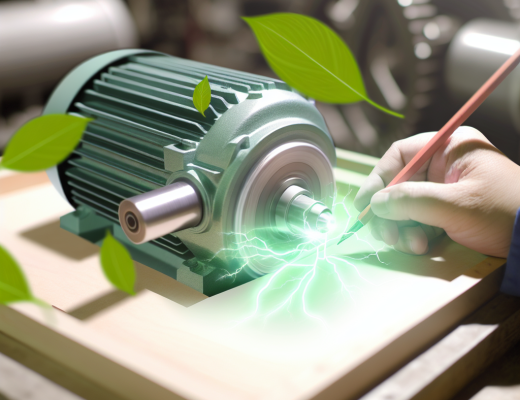Just imagine harnessing solar energy from the surface of lakes and reservoirs. Floating solar power plants are a revolutionary solution that combines renewable energy production with innovative technology. In this post, you’ll discover how these unique systems function, their advantages over traditional solar installations, and the role they play in maximizing land use and minimizing water evaporation. By exploring the mechanics behind floating solar panels, you’ll gain a deeper understanding of how they contribute to a sustainable energy future.
The Concept of Floating Solar Power Plants
Your understanding of floating solar power plants can transform how you view renewable energy. These innovative systems are designed to harness solar energy by placing photovoltaic panels on bodies of water, from lakes to reservoirs. This arrangement not only optimizes land use but also provides additional benefits linked to water bodies, offering a promising solution for sustainable energy production.
Definition and Overview
Between traditional solar farms and innovative aquaculture, floating solar power plants emerge as a unique solution. These installations consist of panels mounted on floating platforms, allowing them to generate electricity while minimizing land use. This sustainable approach combines the advantages of solar energy with the unique characteristics of aquatic environments.
Advantages of Floating Solar
An array of benefits comes with the adoption of floating solar power plants. They help reduce evaporation from water bodies, improve panel efficiency through natural cooling, and can be established in areas unsuitable for land development. This integration of solar technology into aquatic environments not only maximizes energy production but also promotes ecological balance.
Hence, floating solar power provides solutions that are not only energy-efficient but environmentally friendly. By harnessing the sun’s energy while promoting healthier water conditions, these plants can significantly reduce carbon footprints. Furthermore, they often face fewer land-use disputes and can be deployed quickly, making them an attractive option for countries striving to meet renewable energy targets. With floating solar, you contribute to a cleaner future while supporting innovative technologies for sustainable development.
Technical Components of Floating Solar Plants
While designing floating solar power plants, you must consider several key technical components that ensure optimal performance and longevity. These components typically include solar panels, buoyant platforms, anchoring systems, and electrical wiring that connects to the grid. Understanding how these elements work together will enable you to appreciate the efficiency and sustainability of this innovative energy solution.
Solar Panels and Their Installation
Across floating solar installations, specialized solar panels are used, often designed to withstand the unique environmental conditions of water surfaces. Installation techniques involve securely attaching these panels to buoyant structures, allowing for quick assembly and maintaining high accessibility for maintenance. This setup is tailored to maximize sun exposure while ensuring stability and safety.
Buoyancy and Structural Integrity
For floating solar power plants, buoyancy and structural integrity are vital for maintaining stability on water bodies. The platform must support solar panels while ensuring they remain above water, even during fluctuating water levels. Additionally, anchors help secure the installation against wind and current.
To achieve effective buoyancy and structural integrity, manufacturers often use high-density polyethylene or similar materials for the floating platforms. These materials are lightweight yet durable, designed to endure harsh weather conditions and resist corrosion. The platform structure must spread its weight evenly to prevent tipping and ensure that the solar panels remain properly aligned for maximum sunlight exposure. This careful engineering allows floating solar power plants to operate efficiently while safeguarding your investment over the long term.
Environmental Considerations
Some may wonder how floating solar power plants affect the environment. Factors to consider include their impact on local ecosystems, potential water conservation benefits, and overall influence on climate change. By understanding these elements, you can better appreciate the balance between renewable energy generation and environmental stewardship.
Impact on Aquatic Ecosystems
Below the surface, floating solar panels can create a unique habitat for various aquatic species. While they provide shade, which may reduce water temperature, it’s important to monitor how these installations affect local flora and fauna in the long run. The interplay between solar panels and aquatic ecosystems requires careful study and management.
Water Conservation Benefits
Environmental factors also highlight how floating solar power plants contribute to water conservation. They help reduce evaporation from water bodies, which is particularly beneficial in arid regions where every drop counts.
To appreciate the water conservation benefits of floating solar installations, consider that they can significantly lower evaporation rates from large bodies of water. By shading the water, these systems help maintain cooler temperatures, leading to less water loss due to evaporation. This is especially beneficial in areas facing drought or limited water resources, making floating solar power an innovative solution that addresses both energy production and water preservation. Incorporating floating solar plants into your renewable energy strategy can thus lead to more sustainable management of valuable water resources.
Economic Viability
All of the factors contributing to the economic viability of floating solar power plants make them an attractive alternative to traditional solar installations. They often have lower land acquisition costs since they utilize water surfaces, and their cooling effect can enhance energy production. Additionally, the rising demand for renewable energy is creating more opportunities for investment and development in this innovative sector.
Cost Analysis and Funding Options
An effective cost analysis reveals that floating solar installations can achieve competitive pricing. Funding options such as government incentives, private investments, and partnerships with financial institutions can further enhance your ability to realize these projects. Moreover, operational costs tend to be lower compared to conventional ground-mounted solar systems, making this option economically appealing.
Case Studies from Around the World
Cost-effective implementations of floating solar power are demonstrated through various successful case studies. These examples highlight the potential for large-scale energy production and sustainability:
- Japan: The Yamakura Dam Floating Solar Plant, with a capacity of 13.7 MW, provides renewable energy for over 4,000 households, reducing carbon emissions by approximately 4,000 tons annually.
- China: The Huainan Solar Plant, boasting 40 MW of capacity, covers a former coal mine and generates enough electricity to power 15,000 homes while saving valuable land resources.
- India: The 600 kW floating solar array in Kerala demonstrates cost-effectiveness, producing energy at 6.5 INR per kWh, ideal for rural electrification.
- France: The 17 MW floating installation on the Romont Lake integrates seamlessly with existing water management systems, providing energy equivalent to powering 10,000 homes.
It’s imperative to look closely at real-world applications that showcase the efficiency and effectiveness of floating solar technology. By examining these case studies, you can approach your project with a better understanding of what can be achieved, gathering insights on how floating solar arrays are not only feasible but also sustainable alternatives that work harmoniously with existing ecosystems while maximizing energy production.
Challenges and Limitations
After exploring the benefits of floating solar power plants, it’s necessary to consider the challenges and limitations they present. Factors such as high installation costs, site selection complexities, and the need for specialized support structures can affect the feasibility and scalability of these systems.
Weather and Environmental Resilience
Limitations exist in how well floating solar panels can endure harsh weather conditions. High winds, extreme temperatures, and heavy rainfall can compromise the stability and efficiency of these installations, and you’ll need to assess whether your chosen location can withstand such environmental stresses.
Maintenance and Operational Issues
Any floating solar system requires regular maintenance to ensure optimal performance. The unique challenges of accessing these installations for cleaning, repairs, and inspections can complicate upkeep, potentially leading to higher operational costs and downtime.
This maintenance challenge is exacerbated by the fact that floating solar plants are often located in remote areas or on large bodies of water, making access difficult. You might experience interruptions in power output due to these logistical hurdles. Scheduling preventive maintenance effectively is key to minimizing operational issues and ensuring the long-term viability of your floating solar system.
Future Prospects of Floating Solar Power
Despite the challenges in energy production, floating solar power plants show promising potential for growth. As the demand for renewable energy increases, these innovative systems can be effectively integrated into various environments, offering a versatile and efficient solution for harnessing solar energy. You can expect to see advancements in design and installation techniques that will further enhance their appeal and functionality in the coming years.
Innovations and Technological Advancements
Solar technology continues to evolve, making floating solar installations more efficient and cost-effective. Researchers and engineers are developing better materials, improved anchoring systems, and advanced energy storage solutions that can optimize energy capture and reduce maintenance needs. You may find it interesting that these innovations are contributing to the overall viability and attractiveness of floating solar power as a mainstream energy source.
Potential for Global Adoption
An increasing number of countries are exploring floating solar power as a viable alternative to traditional energy sources. You may be aware that regions facing land scarcity or water management challenges find these systems particularly appealing, as they can leverage existing water bodies to generate renewable energy. This trend highlights the significant potential for broader adoption globally.
Hence, as governments and energy companies aim for climate targets, floating solar power plants represent a sustainable solution that combines land use efficiency with the benefits of solar energy. You can see these installations gaining traction in countries like China, Japan, and the United States, where local conditions favor their implementation. With ongoing innovations and a global push for cleaner energy, the future of floating solar power looks promising, offering a scalable approach to meet your energy needs sustainably.
Conclusion
On the whole, floating solar power plants represent an innovative solution for harnessing solar energy while conserving land. By placing solar panels on water bodies, you not only optimize energy generation but also reduce evaporation and improve water quality. This dual benefit enhances the viability of renewable energy in your community. As you explore sustainable options, consider how floating solar technology can contribute to a cleaner, more efficient energy future for you and your environment.




